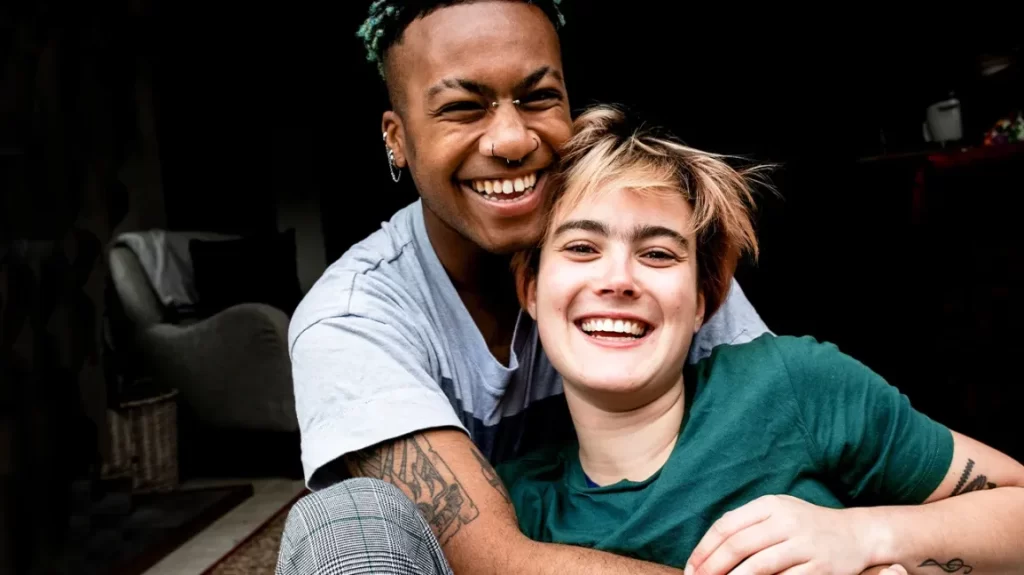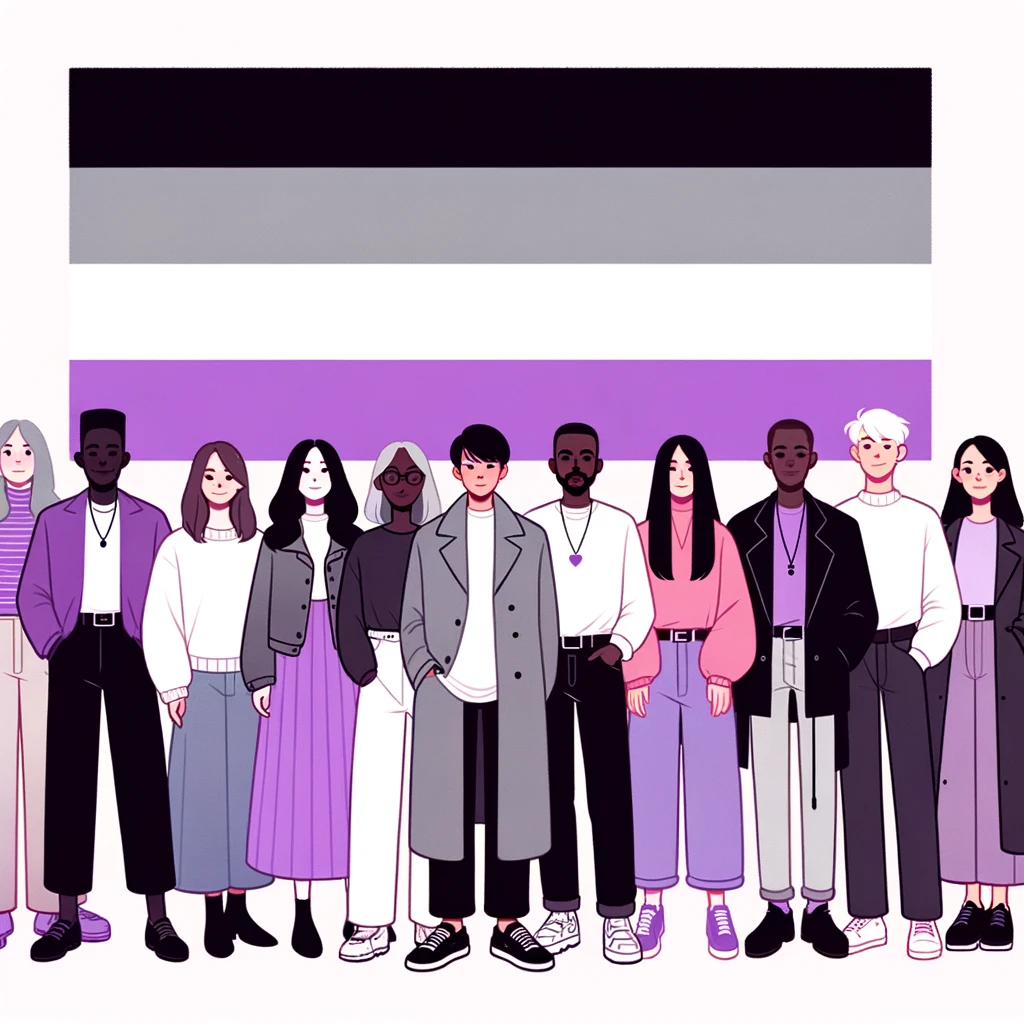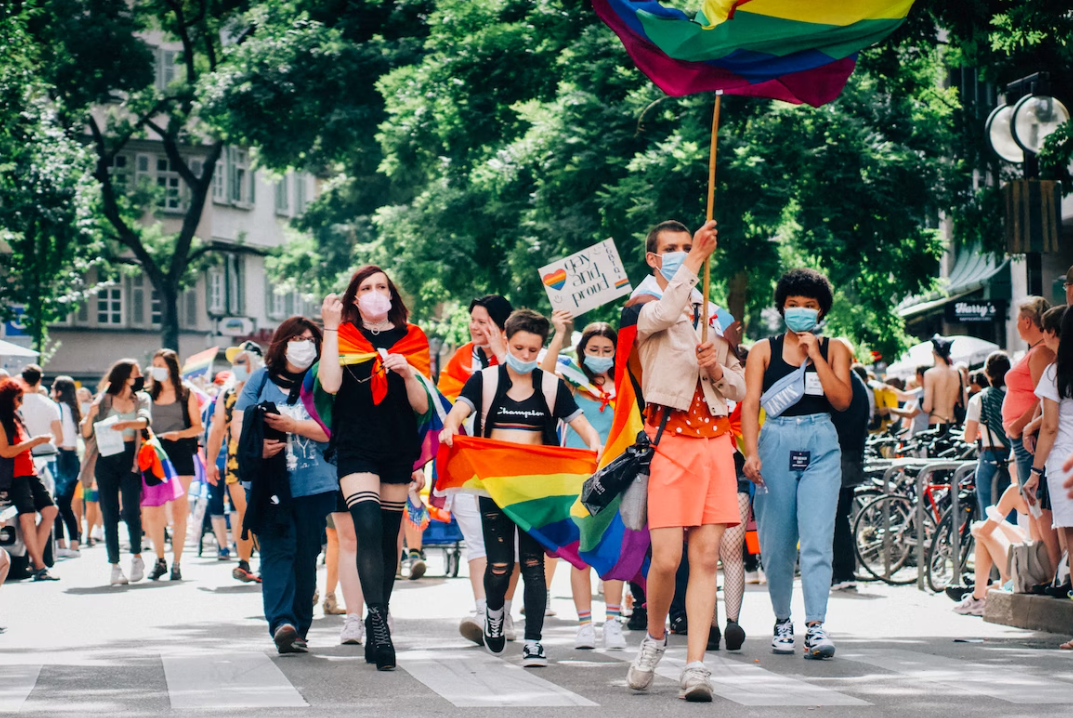Asexuality is an often-misunderstood orientation that falls under the broad spectrum of human sexuality. Asexual people meaning implies “aces,” that do not experience sexual attraction towards others. While asexuality is gaining more recognition and visibility, there are still many misconceptions surrounding this diverse community. Here are some hidden facts about asexual people that we bet you don’t know.
Hidden Facts About Asexual People
One common misconception about asexual people is that they lack a desire for intimacy or emotional connections. However, asexuality does not equate to a lack of romantic attraction or emotional bonds. Asexual individuals can form deep, meaningful relationships and experience romantic attraction, which may or may not include sexual activity. It is crucial to acknowledge that asexual people can still have fulfilling and loving relationships that are based on emotional connections rather than sexual desire. Let us find more on various hidden facts about asexual people.
1. Asexual People Have Different Romantic Orientations
Asexual persons can have various romantic orientations, which refer to the emotional and romantic attraction they experience. Some asexual individuals may identify as heteroromantic, homoromantic, biromantic, panromantic, or aromantic, indicating the gender(s) they are romantically attracted to. This distinction helps to understand that asexuality is unrelated to romantic orientation. Recognizing the distinction between sexual and romantic orientations is crucial in understanding the complexity and diversity within the asexual community. It highlights the importance of acknowledging and respecting asexual person’s romantic experiences and identities.
2. Asexual People Are Not Celibate
A common misconception is that asexual individuals are celibate or simply abstaining from sex. While some asexual people may choose to be celibate, their asexuality is not the same as celibacy. Asexual individuals can engage in sexual activity if they desire, but it does not stem from experiencing sexual attraction.
Asexuality is about attraction, whereas celibacy is about personal choices regarding sexual behavior.
3. Asexuality Is a Valid Sexual Orientation
Asexuality is a legitimate sexual orientation, just like heterosexuality, homosexuality, or bisexuality. It is essential to acknowledge and respect asexual person’s experiences and identities, rather than dismissing or invalidating them. Understanding asexuality as a valid orientation promotes inclusivity and acceptance for the diverse range of human experiences.
Just like heterosexuality, homosexuality, or bisexuality, asexuality is a natural variation of human sexuality. It is important to recognize and respect asexual person’s identities and experiences. Asexuality is not a deficiency or a phase; it is a valid and inherent aspect of who they are. By acknowledging asexuality as a valid sexual orientation, we can foster inclusivity, understanding, and support for the asexual community.
4. Asexual People Can Still Have Intimate Relationships
Asexual individuals can form intimate and loving relationships, including friendships, romantic partnerships, and even marriages. Emotional connection, communication, and shared interests play crucial roles in building fulfilling relationships for asexual people, even in the absence of sexual attraction.
Intimacy encompasses a broad spectrum of emotional connections, such as deep friendships, companionship, and romantic bonds. Asexual individuals may experience love, affection, and emotional closeness just like anyone else. They can engage in activities like cuddling, holding hands, and sharing intimate conversations, which are vital for building meaningful connections. While sexual intimacy may not be present, asexual people find fulfillment and happiness in non-sexual forms of intimacy that strengthen their relationships and create lasting bonds.
5. Asexuality Is Not a Disorder
Asexuality is not a disorder or a medical condition that requires treatment. It is simply a natural variation of human sexuality. Asexual person are healthy and function perfectly well, just like individuals with any other sexual orientation. It is crucial to refrain from pathologizing asexuality and to foster a more inclusive understanding of human diversity.
Asexuality is not something that needs to be fixed or treated. Asexual individuals have the right to identify and express themselves authentically without judgment or pathologization. Recognizing asexuality as a normal and valid orientation promotes acceptance, inclusivity, and understanding of diverse sexualities, fostering a society that embraces the uniqueness and diversity of human experiences.
6. Asexuality Is Not the Same as Aromanticism
While asexuality refers to the absence of sexual attraction, aromanticism pertains to the absence of romantic attraction. Aromantic individuals may experience sexual attraction, but they do not experience romantic attraction towards others. It is important to recognize the differences between these two aspects of human sexuality to better understand and support individuals who identify as asexual or aromantic.
7. Asexual People Can Experience Different Levels of Sexual Arousal
Although asexual persons do not experience sexual attraction, they can still experience sexual arousal. Arousal and attraction are distinct experiences. Asexual individuals may engage in sexual activities for various reasons, such as curiosity, emotional connection, or physical pleasure. It is important to respect an individual’s boundaries and desires when discussing and engaging in sexual activities.
While asexuals may not experience sexual attraction towards others, they can still have physical responses to stimuli and experience arousal. Each individual’s experience with sexual arousal may differ, ranging from none at all to occasional or situational arousal. It is important to understand that sexual arousal and attraction are distinct concepts. Recognizing this diversity within asexuality helps challenge misconceptions and promotes a more nuanced understanding of human sexuality.
8. Asexual People Are Part of the LGBTQ+ Community
Asexual person are a valued part of the LGBTQ+ (lesbian, gay, bisexual, transgender, queer) community. Their unique experiences and perspectives contribute to the diversity and richness of the community. Recognizing asexual individuals as an integral part of LGBTQ+ spaces fosters inclusivity and supports a more comprehensive understanding of human sexuality.
Asexual individuals often face similar challenges, such as navigating societal expectations and finding acceptance. Including asexuality within the LGBTQ+ community fosters a more inclusive and supportive environment that embraces all sexual orientations and identities. It promotes solidarity, understanding, and collective advocacy for the rights and well-being of all individuals, regardless of their sexual orientation.
9. Asexual Person Can Still Form Families
Contrary to the misconception that asexual individuals cannot form families, they can have families through various means. Adoption, fostering, surrogacy, or co-parenting arrangements are some of the ways asexual people can become parents. Parenthood is not dependent on sexual attraction, and asexual individuals can build loving families, just like anyone else.
Asexual individuals may choose to have families through adoption, fostering, or forming close-knit relationships with chosen family members and friends. Family is a concept that goes beyond traditional notions of romantic or sexual partnerships. Asexual individuals can build loving, supportive, and fulfilling familial bonds based on emotional connection, shared values, and a desire for companionship, demonstrating the diverse ways in which families can be formed.
10. Asexual Person Can Lead Fulfilling Lives
Asexuality does not hinder an individual’s ability to lead a fulfilling and meaningful life. Asexual individuals can pursue successful careers, engage in hobbies, maintain close relationships, and find happiness in their lives. Their orientation does not define their worth or limit their potential for personal growth and happiness.
Their lives are rich with personal growth, meaningful connections, and accomplishments. Asexuality does not inherently hinder one’s ability to experience joy, success, or fulfillment in areas such as career, friendships, hobbies, and personal goals. Asexual individuals can cultivate fulfilling relationships, pursue their passions, contribute to their communities, and experience personal growth and self-discovery. Embracing and respecting the diverse ways in which individuals find fulfillment allows us to celebrate the unique paths and experiences of asexual person.

Image courtesy: https://www.healthline.com/health/relationships/asexual-dating
What are the common challenges faced by asexual people?
Asexual people face unique challenges in a society that often revolves around sexual attraction and relationships. These challenges can arise from misconceptions, societal pressures, and the lack of visibility and understanding. Understanding and addressing the specific challenges faced by asexual people is crucial for creating a more inclusive and supportive environment. Here are some of the common challenges faced by asexual people:
- Misunderstanding and Misrepresentation: Asexual people challenges often stem from the misunderstanding and misrepresentation of their identity. Many individuals find it difficult to comprehend a lack of sexual attraction, leading to skepticism, invalidation, or even disbelief regarding their orientation.
- Lack of Visibility: Asexual people challenges include the lack of visibility in mainstream media, education, and conversations about human sexuality. This can contribute to feelings of isolation and a lack of community support, making it harder for asexual individuals to find acceptance and understanding.
- Internalized Stigma: Asexual people may internalize societal messages and experience self-doubt or shame about their orientation. They may struggle with accepting themselves fully and may feel pressured to conform to societal expectations of sexual relationships, which can lead to feelings of alienation and self-discovery challenges.
- Relationship Expectations: Asexual people challenges are often related to navigating romantic and intimate relationships. Society commonly assumes that romantic relationships should include sexual attraction and activity, which can create tension and confusion for asexual individuals. They may struggle to find partners who understand and respect their orientation, leading to difficulties in building and maintaining meaningful relationships.
- Pressure to “Fix” or Change: Asexual people challenges may arise from external pressures to “fix” or change their orientation. Some individuals may face criticism, judgment, or even attempts to invalidate their identity, leading to feelings of invalidation and asexual people mental health challenges such as anxiety or depression.
- Lack of Supportive Resources: Asexual people challenges include the limited availability of resources and support specifically tailored to their needs. Mental health professionals, educators, and support groups may not be adequately equipped to understand and address the unique experiences and challenges faced by asexual individuals.
- Invalidating Language and Assumptions: Asexual people challenges stem from the use of invalidating language and assumptions. Asexual individuals may encounter dismissive comments such as “it’s just a phase” or “you just haven’t found the right person yet.” Such statements further marginalize asexual people and invalidate their lived experiences.
- Pressure to Justify or Explain: Asexual people challenges often involve the pressure to justify or explain their orientation to others. Asexual individuals may feel compelled to disclose personal details about their identity, which can be exhausting and invasive. This pressure can hinder the process of self-acceptance and contribute to asexual people challenges in relationships and social interactions.
- Inclusion within LGBTQ+ Spaces: Asexual people challenges extend to finding inclusion within the LGBTQ+ community itself. Some asexual individuals may face skepticism or rejection due to their orientation, as it deviates from traditional understandings of sexual identities. This lack of acceptance within LGBTQ+ spaces can further isolate and marginalize asexual people.
- Lack of Awareness and Education: Asexual people challenges are amplified by the general lack of awareness and education about asexuality. This lack of understanding perpetuates misconceptions and contributes to the erasure of asexual experiences. Comprehensive education about diverse sexual orientations is crucial for fostering acceptance and support for asexual individuals.
Addressing the challenges faced by asexual people requires a multifaceted approach. Society must work towards increasing visibility and representation of asexuality in media, education, and public discourse. Mental health professionals should be trained to understand and support asexual individuals, and resources should be made available to help navigate relationships and self-acceptance. It is also essential for individuals to challenge their own assumptions and educate themselves about asexuality, actively working towards creating an inclusive and accepting environment for all sexual orientations.
Additionally, creating spaces where asexual people can connect with one another and find support is crucial. Asexual people challenges can be alleviated through the establishment of supportive communities, both online and offline, where individuals can share their experiences, find validation, and foster a sense of belonging.
Ultimately, it is vital for society to recognize and respect asexual people’s identities and experiences. By addressing the unique challenges faced by asexual individuals and working towards inclusivity and acceptance, we can create a more compassionate and understanding world for all.
Understanding asexuality is essential to creating a more inclusive and accepting society. By dispelling misconceptions and learning more about asexual people, we can foster an environment that celebrates and respects the diverse range of human experiences. Remember, asexuality is a valid sexual orientation, and asexual person deserve recognition, understanding, and support.

FAQ’s – Frequently Asked questions
1. What does it mean to be asexual?
Answer: Being asexual means that a person experiences little to no sexual attraction to others. This doesn’t necessarily mean they lack emotional, aesthetic, or romantic attraction.
2. Is asexuality the same as celibacy?
Answer: No. Asexuality is an intrinsic orientation concerning one’s experience (or lack) of sexual attraction. Celibacy, on the other hand, is a conscious choice to abstain from sexual activity, regardless of sexual attraction.
3. Can asexual people fall in love?
Answer: Yes. Asexuality pertains to sexual attraction, not romantic attraction. Many asexual individuals experience romantic feelings and can form deep emotional bonds with others.
4. Are there different types of asexuality?
Answer: Yes. Asexuality exists on a spectrum. For example, some asexuals might be “gray-asexual,” experiencing sexual attraction infrequently, or “demisexual,” feeling sexual attraction only after forming a close emotional bond with someone.
5. Do asexual people ever have sex?
Answer: Some do, and some don’t. The reasons can vary, from wanting to please a partner, curiosity, or wanting children. Other asexuals might not have any interest in sex at all.
6. Is asexuality a result of trauma or a medical condition?
Answer: No. While trauma or certain medical conditions can affect one’s interest or desire for sex, asexuality as an orientation isn’t caused by these factors. Just like other sexual orientations, it’s a natural variation of human experience.
7. Can asexual people have a libido?
Answer: Yes. Sexual attraction and libido (sexual drive) are separate. An asexual individual might have a libido but not feel the need to direct that desire towards other people.
8. How do I know if I’m asexual?
Answer: Self-identification is key. If you consistently lack sexual attraction or it’s infrequent, you might identify with asexuality. However, everyone’s experience is unique, and it’s okay to take time to understand your feelings and attractions.
9. Can asexual people be in relationships with non-asexual people?
Answer: Absolutely. Like any relationship, open communication and understanding are crucial. Both parties should discuss boundaries, expectations, and ways to ensure mutual respect and fulfillment.
10. Is there an asexual community?
Answer: Yes. There are numerous online and offline communities and resources dedicated to asexual awareness, support, and advocacy. The Asexual Visibility and Education Network (AVEN) is one prominent example.




